
The prices of agricultural supplies have skyrocketed in recent months, and this worries farmers across the country, including those in Santa Cecilia of La Cruz.
The president of the Association of Farmers and Ranchers of Santa Cecilia and San Vicente, Iveth Guzman, is one of them. Guzman wonders if her line of work will disappear as a result of rising prices for raw materials and fuels.
“The price of the fertilizer, the price of the supplies, is so expensive, just so expensive…. What’s going to happen to small producers? Are we going to end up dying out or are we going to disappear?” asked the farmer, who raises plantain, corn, rice, beans and tiquisque (a kind of tuber).
According to Gilberto Mora, the head of the Agricultural Extension Agency (AEA) of the Ministry of Agriculture and Livestock (MAG for the Spanish acronym) in La Cruz, production yields may drop. Mora mentioned that, due to high costs, farmers don’t use the same supplies, but rather look for other options that aren’t the most suitable, apply less product or stop using them altogether.
Why is everything so expensive?
The president of the Chamber of Agricultural Supplies, Federico Lizano, explained that supplies have increased in price since the middle of 2021 for several reasons, and that he doesn’t expect them to return to the previous prices.
The first reason is global transportation logistics, since most supplies, or their raw materials, are imported. Ocean freight costs increased by up to three or four times and this increase was transferred to the cost of products such as fertilizers or agrochemicals.
The second reason is the war between Russia and Ukraine. Both countries produce phosphorus, nitrogen, and potassium, which are needed to produce granular fertilizers. As a result of the conflict, they stopped exporting them. This generates greater demand and less supply for other countries that continue to produce these raw materials.
Unfortunately, it isn’t a situation that I see ending in the short term and I don’t think that the prices of these supplies are going to return to the prices of a year ago,” Lizano remarked.
According to him, producers will have to get used to producing with higher costs and without receiving higher pay for their work. Lizano said that although prices do rise in supermarkets, producers don’t see this increase reflected in what they earn.
“They tell a potato producer that if they buy the product from him, it’s at the same price, but you go to the supermarket and they did raise the price for potatoes, because they say that everything is more expensive. So, where does the money go?,” Lizano pointed out as an example.
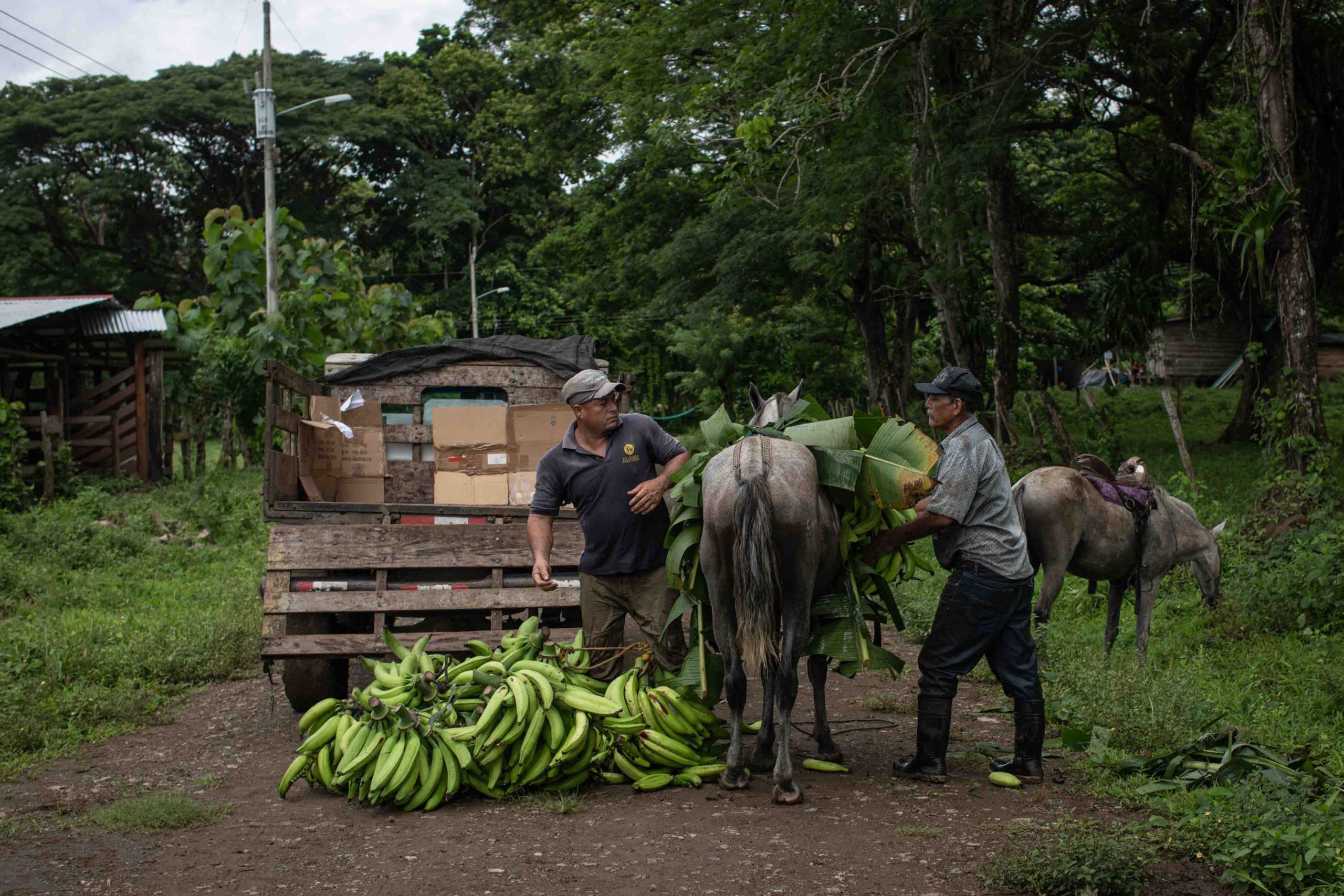
Two producers from Santa Cecilia of La Cruz, where farmers are dedicated to planting crops like plantains, beans and corn. Foto: Cesar Arroyo.
Iveth Guzman, the producer from Santa Cecilia, is one who is discouraged by the unfair payment for her products. “Right now the fertilizer is so expensive, and what do you think he buys a quintal (100 pounds) of corn for? They pay ₡8,500 (about $13)! You kind of get down. I get frustrated and I don’t even know what to do. You break your back working in the sun,” she lamented.
Support That Doesn’t Come
Guzman is also concerned about the lack of support from some public institutions to combat the problems experienced by producers in this border area.
Many of them rent the land and don’t have all of the land papers up to date, such as land registry plans or property titles. Sometimes they only have a letter of sale (an informal piece of paper that says that the plot has been sold) and institutions don’t accept that document to give them credit or other support for farming.
Also, part of the limitations that public institutions have to help these people out is the lack of human and economic resources. In this case, MAG tries to carry out projects on an inter-institutional basis with other entities that can provide greater investment.
Mora explained that, in a canton as large as La Cruz, MAG doesn’t have as much capacity to solve all of the demands of the population. “So covering the entire population is very difficult. Right now there are just two of us officials,” he commented.
In order for MAG to be able to help them with technical support and supplies, it’s important that they are registered as small producers. In addition, MAG does advise producers on what technologies they need to improve their production, but it’s not the institution that provides them.
“You have to look for resources in another institution to be able to finance them, and that takes many years,” Mora explained.
The president of La Cruz’s Association for Social Development, Isabel Rodriguez, wants the same thing as Iveth Guzman: not that they be given things, but that they be given ways to make their work easier, such as training or more access to institutes.
We don’t want the producer to be under the government’s care, but we need to be given ways to make their work easier, because the majority, almost 90%, are independent workers because we work the land,” Rodriguez stated.
The community leader also explained that the same fertilizer that she bought for ₡12,000-₡15,000 (about $17.75 to $22) at the beginning of 2021, they bought for ₡36,000 (about $53) in November of that same year. Rodriguez commented that it even cost up to ₡50,000 ($74) in other stores.
That’s why, even knowing that it’s illegal, many producers had to acquire supplies in Nicaragua to be able to harvest beans.
“We know that the situation in Nicaragua is complicated, but even so, the products that they need there aren’t much cheaper.”
Some Changes Are Necessary
Producers know that it’s the farmers who have to adapt to the conditions by applying new production methodologies.
For example, Gilberto Mora from the AEA of La Cruz mentioned that there are options that the producer can implement, such as organic fertilizers, but he admitted that it’s a culture that has to be changed and that takes time. Although it doesn’t solve the whole problem, this softens the high impacts that producers have been having.
That has provided relief for some farmers, such as Nicoyan Gualberto Obregon. He grows rice, beans, yucca (cassava), and corn, and with support from a project promoted by Earth University, he learned to produce his own organic fruit-based fertilizers.
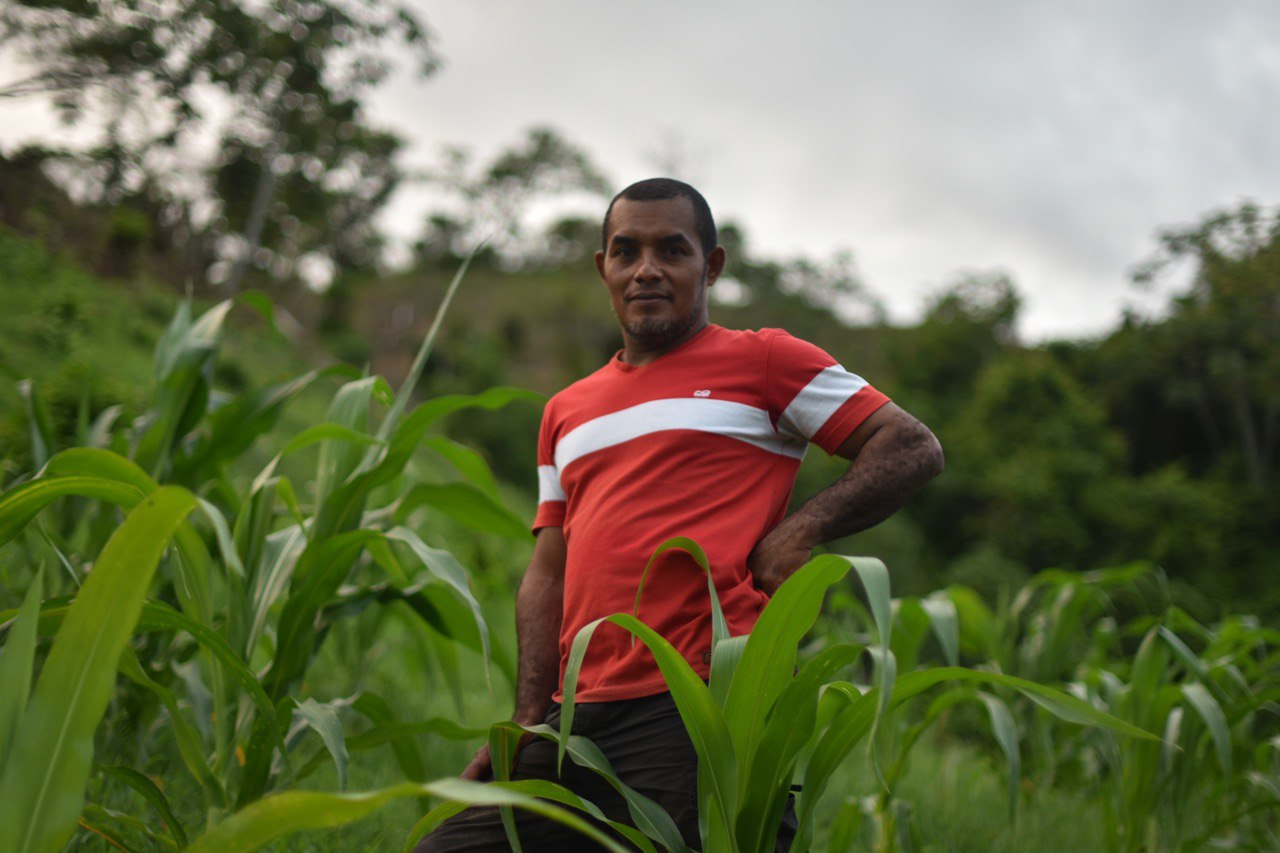
Gualberto Obregon, who also grows corn, rice and beans, uses fruit peels to produce his own organic fertilizer. This is one of the alternatives so as not to depend on marketplace supplies. Photo: EARTH University
To give an example, one of the organic fertilizers that Mora produces is based on decomposed fruit. The farmer saves ₡55,000 (about $81) by producing and using that fertilizer instead of buying fertilizer.
I do it with fruit, plantain peels, mangoes, I do an egg shell; all those things are thrown there and left to decompose and now you have a potassium fertilizer,” explained the farmer.
According to him, it’s normal that many “old school” farmers don’t want to adapt new methodologies, but this can offer them many advantages beyond mere economic savings.
This was also affirmed by Julio Camacho, an agronomist and municipal council member in La Cruz. To him, the producer has to want to implement new technologies and methodologies. Otherwise meaningless investments would be made.
In addition, he also stated that it’s important that institutions change the way they help producers and do it in a more long-term way. To him, it’s not enough that institutions provide supplies to producers, but rather that they think in a more entrepreneurial way.
“There are institutions that have bet on giving fertilizers, agrochemicals, but an agrochemical helped you for one harvest, and what about the next one? That’s where bad investments are being made,” commented the agronomist and council member.


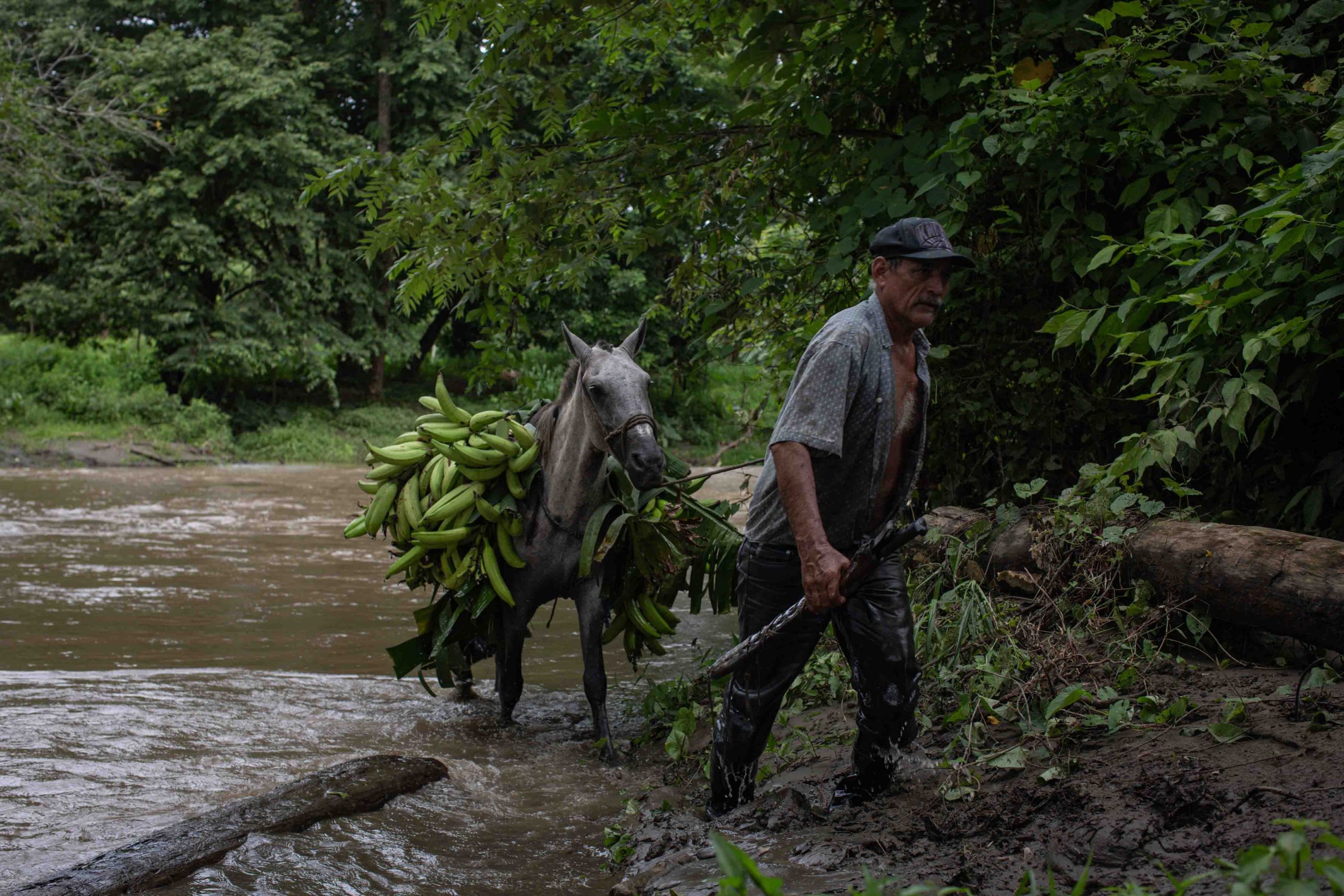
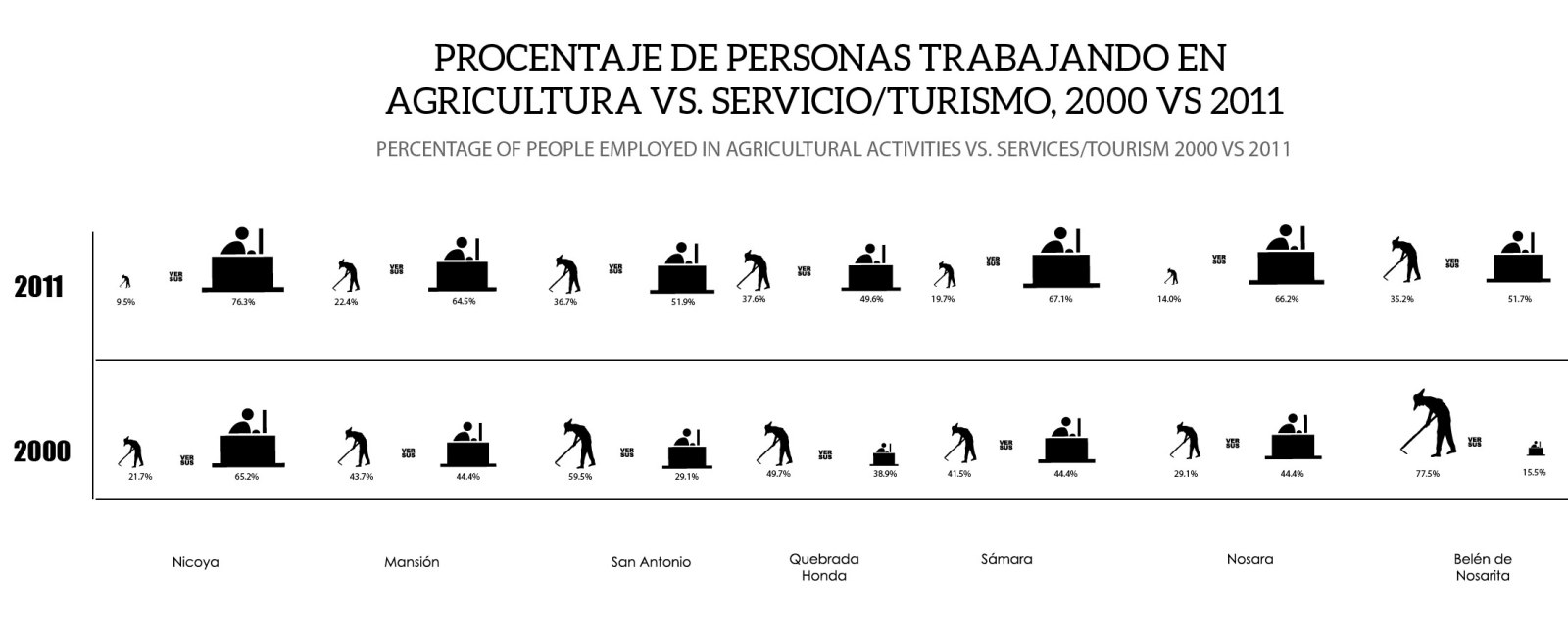
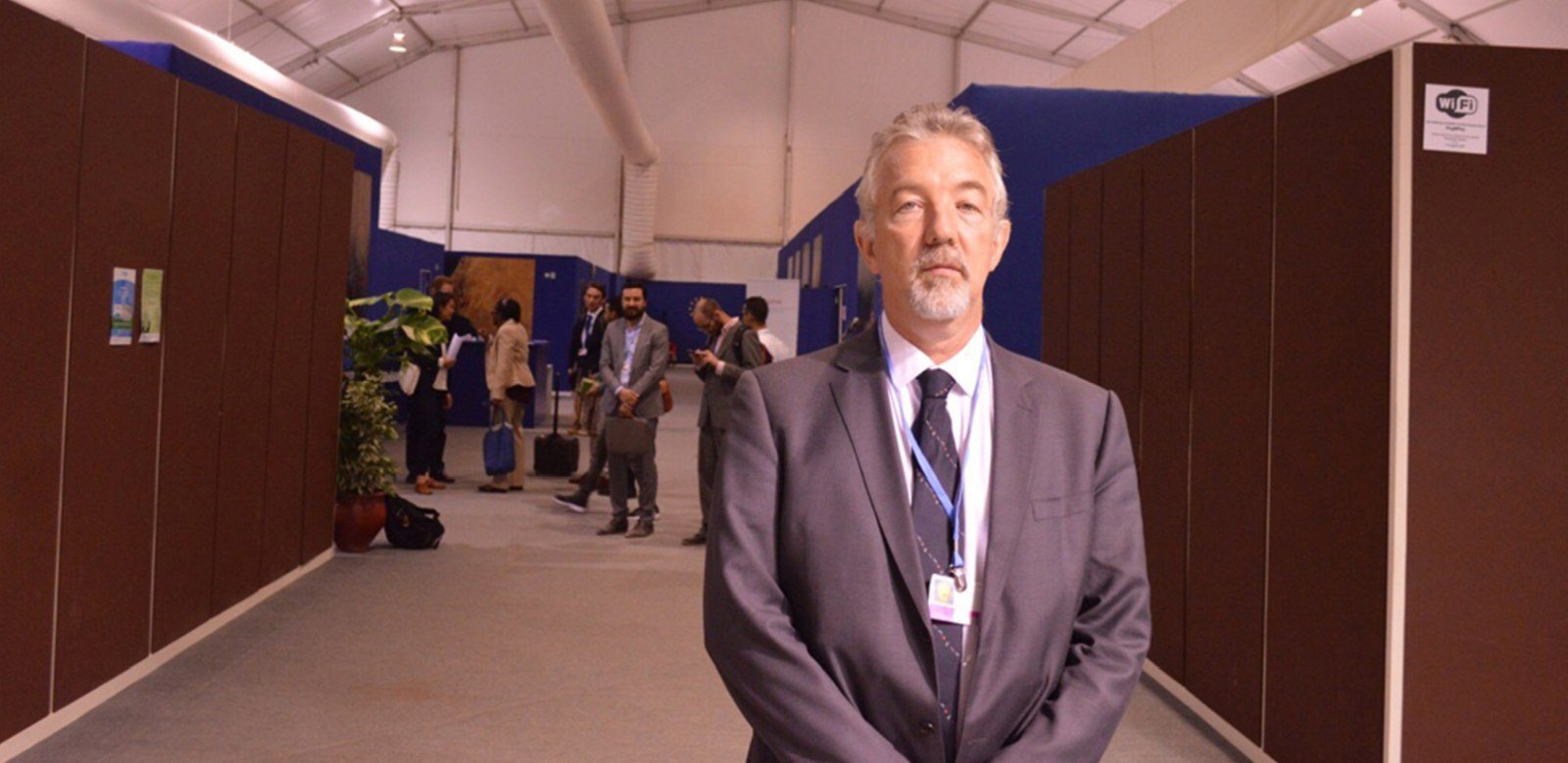
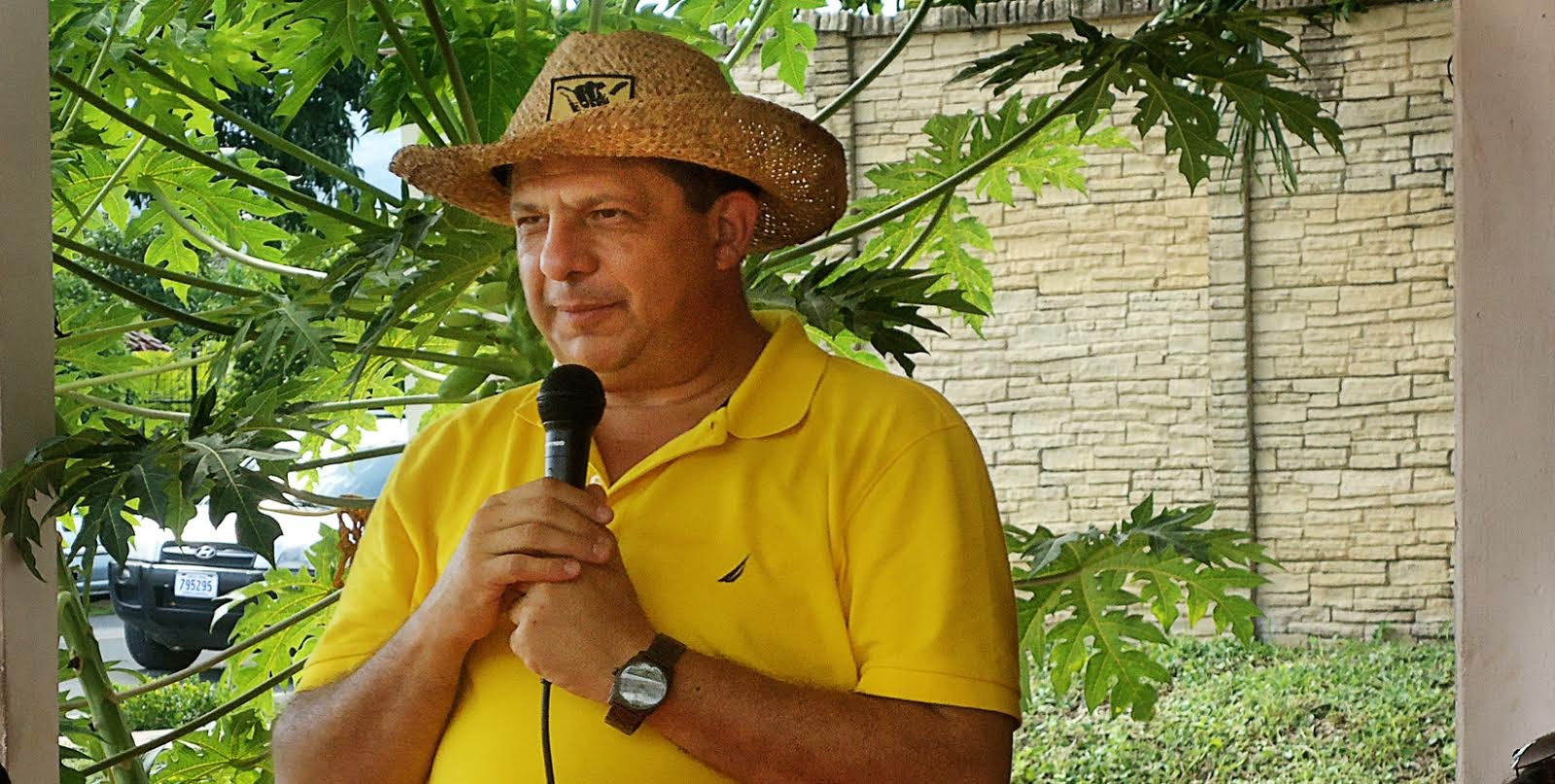

Comments